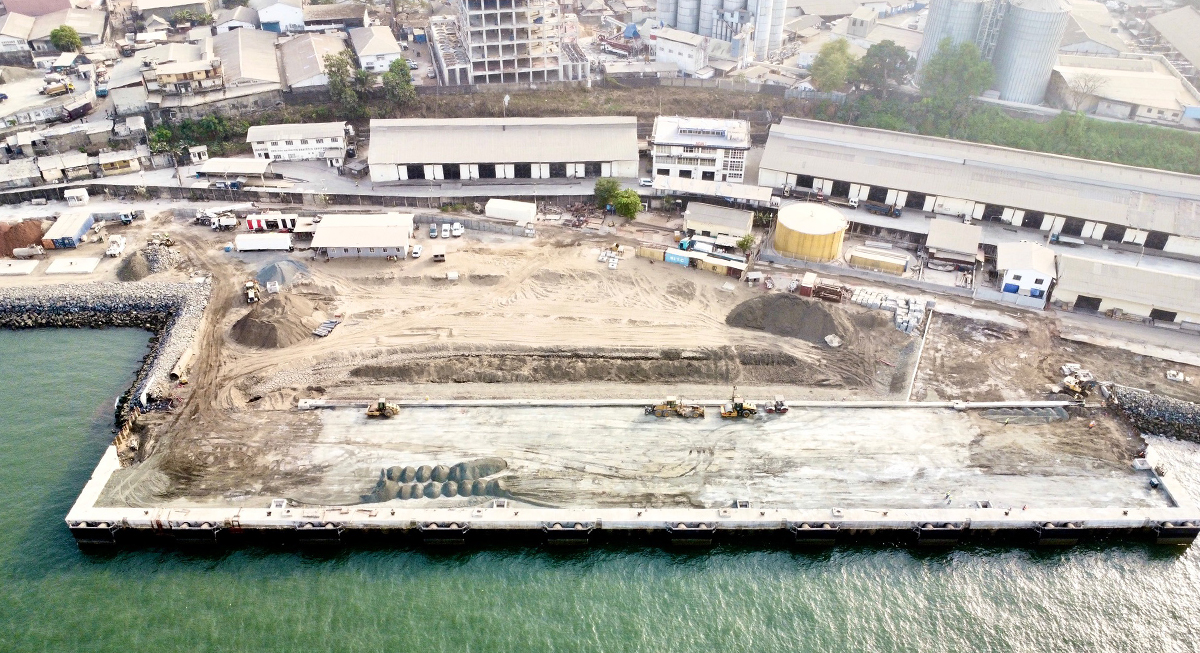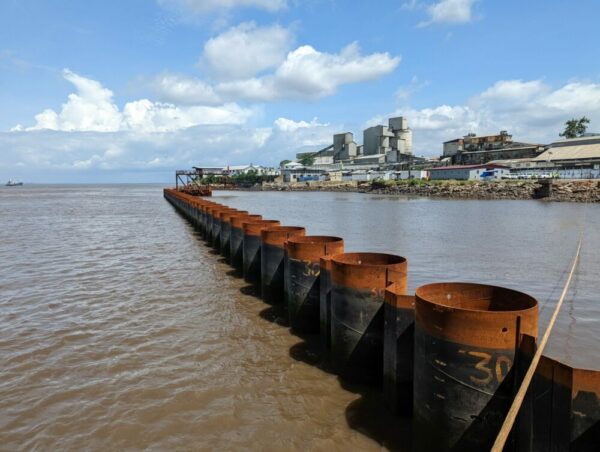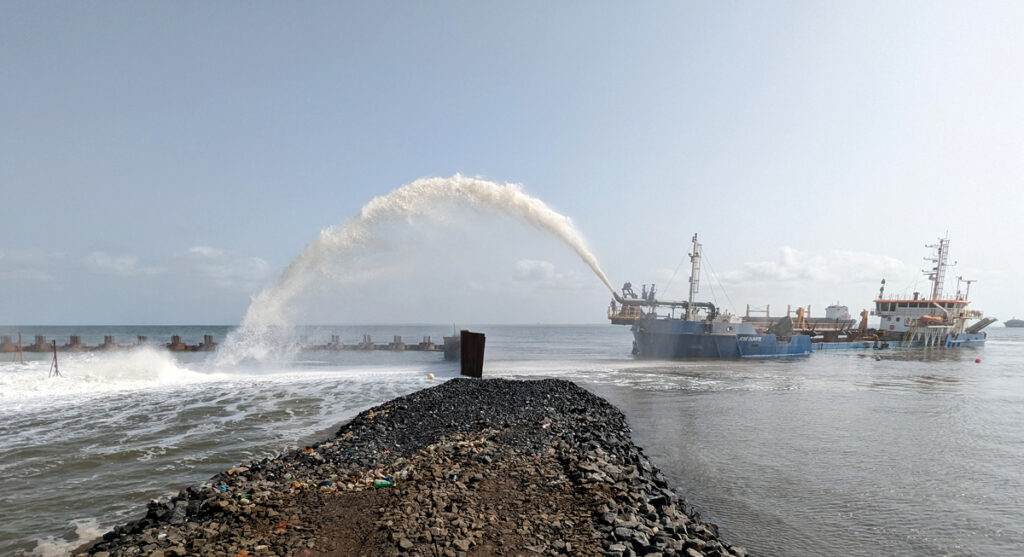
Freetown, Sierra Leone, is home to the West African Coast’s largest natural harbour. The historic port is a bustling hub of import/export and a significant source of the country’s economic prosperity.
It is divided into two concessions by the Government of Sierra Leone, one of which is owned by UK’s Nectar Group that have operated the (NSBT) bulk and break-bulk terminal since 2015. Substantial improvements have been made to this terminal in that time, including new handling equipment and improved warehouses, security, and lighting to improve user experience.
The concession agreement required that the terminal should undergo an expansion to introduce a third berth and infrastructure that is capable of supporting larger vessels.
Beckett Rankine has overseen the port expansion project from masterplan to construction. We successfully navigated a number of complexities that included Sierra Leone’s rainy season, a lack of geological data, and global politics affecting material supply.
To achieve the desired results while maintaining quality and cost efficiency, we applied flexibility, efficiency and creative problem-solving to the project process from the beginning.
Funding and programme were key constraints to the project, which was executed using the NEC4: Option C Contract. This type of contract is compatible with the complex nature of the project and shares the financial risk between the Client and Contractor.
In turn, it aims to induce collaboration throughout the project process as it incentivises the parties to work together to minimise spend, without compromising on quality.
The Early Contractor Involvement (ECI) was executed successfully under a tight timeframe and benefitted from local knowledge gained by the Contractor on an earlier project, to introduce several value-engineered design variations to suit the conditions.
From the start of the procurement process, there had been additional pressure on the project timeline to start critical activities before Sierra Leone’s rainy season between May and November.
When the price of steel rapidly elevated along with significant delivery delays – a likely side effect from the pandemic delaying production and disruption from the Ukraine war – the design had to change again to recalibrate, adjusting the steel tube sizes to suit availability while achieving the same result within the same time frame.
Geotechnical data for Sierra Leone has been typically focused on in-land waterways with little available data for the coastal zone.
Observations from the site during piling for the new berth showed that some of the ground was softer than had originally been expected.
This challenge required a considered approach, combining some strengthening of the steel structure with a carefully orchestrated plan for sequencing the reclamation within specified zones to minimise stresses and movements within the structure and the ground.
To avoid a delay of several months in procuring new steel, some steel that was already on site was redistributed away from parts of the structure that could manage without it. The structure was then re-analysed with updated geotechnical parameters.
In addition to minimising delays, this solution reduced the overall energy output by avoiding the energy use and transportation emissions that procuring new steel would have needed.

Learning from previous projects in the area, good quality hydraulic fill material was sourced from a nearby area of seabed. A reasonably small dredger (with a hopper capacity of approximately 1000m3) was used to enable careful placing of fill in the structure at a controlled rate.
Multiple prisms, tiltmeters and settlement markers were placed on the new steel walls and within the reclamation for a sophisticated, automated monitoring system that gave real-time results as to how the walls moved throughout the process.
As a result, the dredging and reclamation was undertaken adopting an observational approach to minimise the impact on the structures; the movement of the walls was tracked against predicted values and so their stability remained intact.
